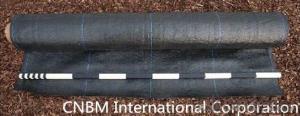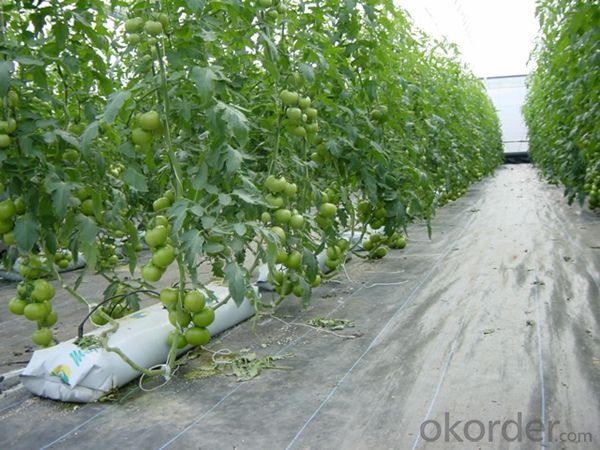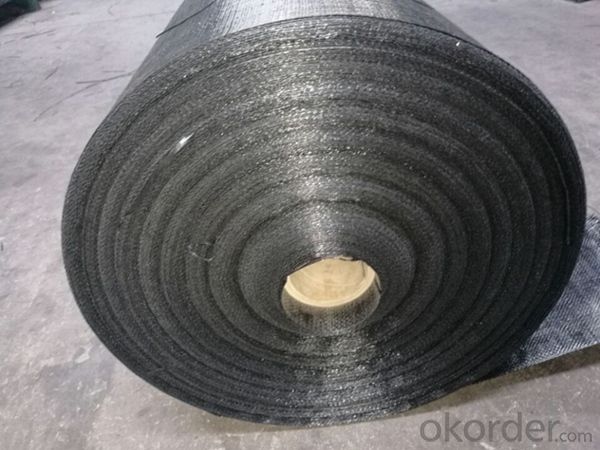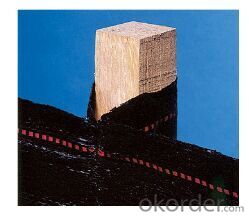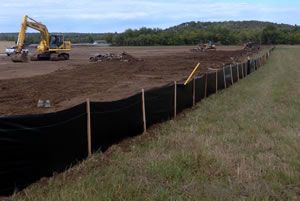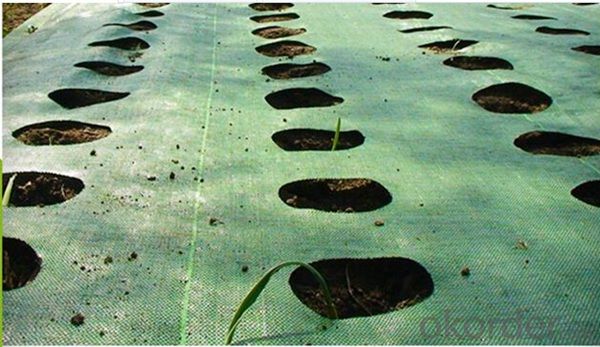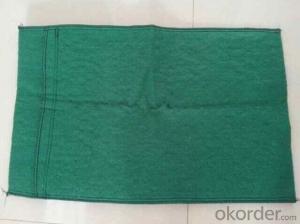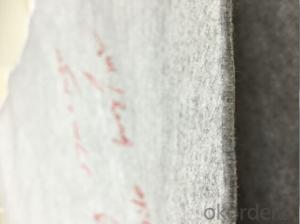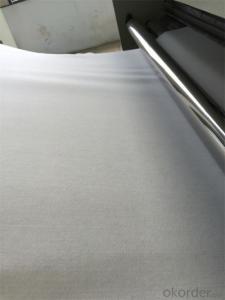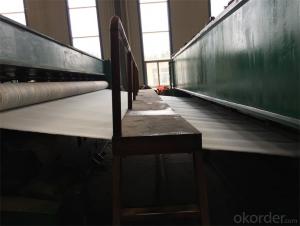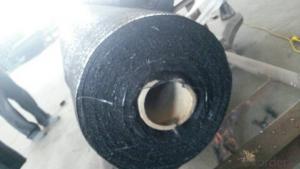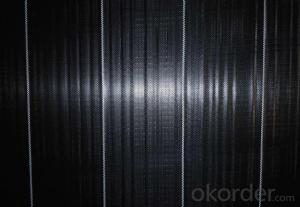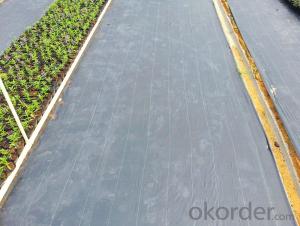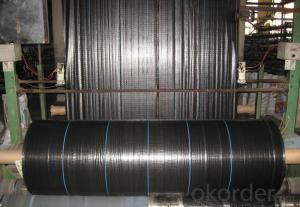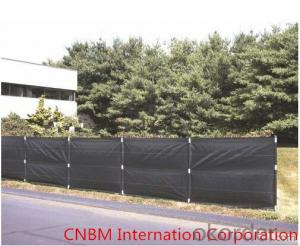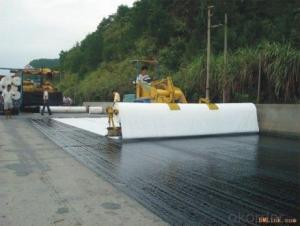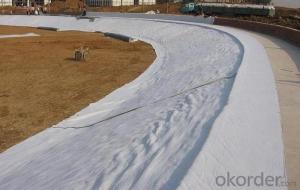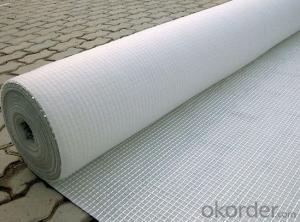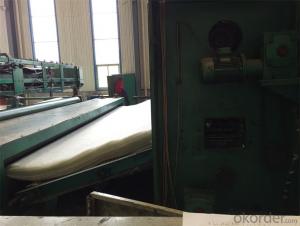Geotextile Permeable Silt Fence with Pocket/Weed Barrier/Woven Fabric
- Loading Port:
- Qingdao
- Payment Terms:
- TT or LC
- Min Order Qty:
- 1000 roll
- Supply Capability:
- 100000 roll/month
OKorder Service Pledge
OKorder Financial Service
You Might Also Like
Specification
1.Silt Fence Description:
A silt fence, also referred to as a filter fence, is a structure composed primarily of geotechnical fabric and that is used as a form of sediment control.These temporary barriers are relatively low in cost, especially when compared to the damages they can prevent. They keep loose soils from traveling into local bodies of water and they also minimize the impact that various forms of development can have on surrounding wildlife.
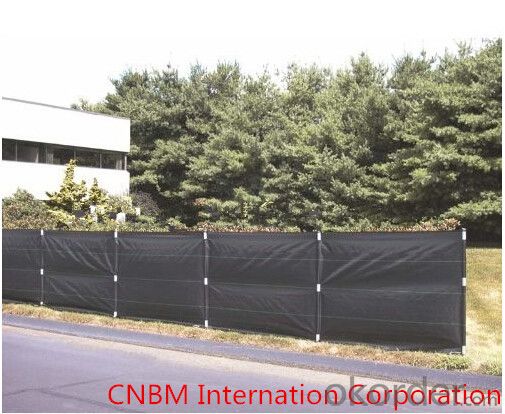

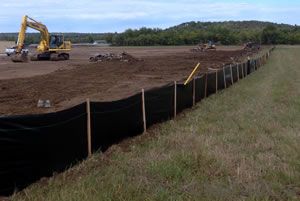
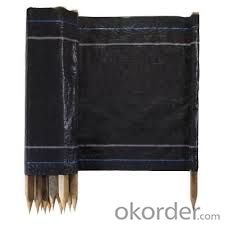
2. Weed Barrier Fabric Specification:
Weight: 80g/m2~400g/m2;
Width: 0.5m ~6m;
Length: 100m or as required;
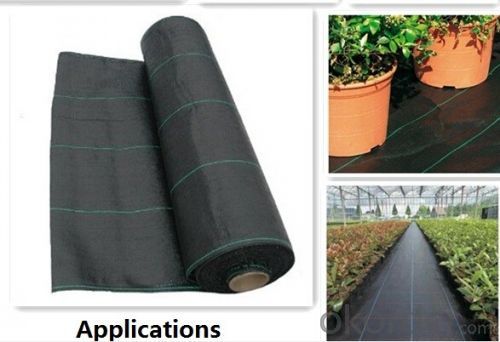
3.Weed Barrier Fabric Functions and Features:
1)Excellent weed control
2)Excellent UV resistance
3)Moisture,fertilizers,air reach plants to allow for healthy soil
4)Good water and air permeability
5)Exceptional toughness and strength
6)Durable,tear-resistant,anti-rot and anti-mildew
7)Light weight,easy to install,follows natural ground contours
8)Ideal for use in landscaped beds,under decks and walkways
9)Fashionable design,high quality,competitive price
10)Long service life
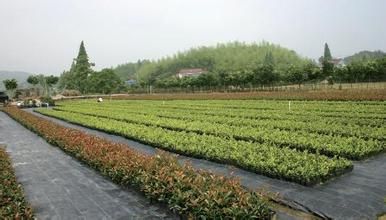
4. Weed Barrier Fabric Usage:
1.Prevent leakage disposal in landfill or waste water or waste dregs disposing field.
2.River bank ,lake dam ,mine remainings ,resevoir ,tunnel ,liquid storage pool(pit ,mine)
3.Preventing leakage in subway ,basement ,tunnel ,hole .
4.Anti-salt leakage in roadbed and other ground sill.
5.The plane direction laying of dam ,the vertical direction laying for ground sill.used in the construction fence and waste material field.
6.Used in ground sill of road ,highway ,railway and waterproof layer of welling clay and wet collapsed loess.
7.Preventing leakage on rooftop.
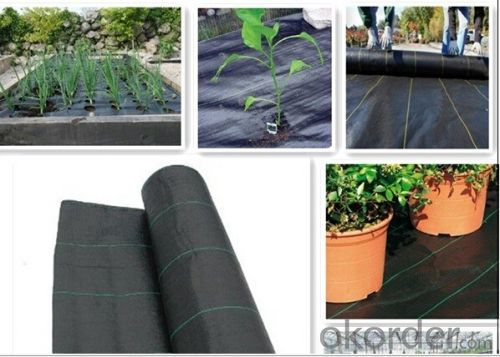
- Q: How can the geotextile extension of 65 to do the following
- I professional production geotextile geomembrane and other geotechnical materials, wish smooth
- Q: Mainly on the cement concrete laying asphalt overlay and deck pavement, a bit puzzled, sticky words and how to design more
- Stress absorption layer thickness greater than 4cm, geotextile in the next, the stress absorption layer thickness of less than 4cm, geotextile on the
- Q: How do geotextiles help with separation of different soil layers?
- Geotextiles help with the separation of different soil layers by acting as a barrier between them, preventing the intermixing of materials. They provide stability by allowing water to drain through while preventing the migration of fine particles, which helps in maintaining the distinct layers and preventing erosion.
- Q: The amount of geotextile drained pipe drape
- According to the two sides agreed by the measurement method, such as by the extension of the package or the expansion of the area can be calculated, you can also agreed to package a tube how much money. Generally calculated by the expansion of the area is more reasonable, because the size of the pipeline.
- Q: Are geotextiles commonly used in agriculture?
- Yes, geotextiles are commonly used in agriculture. They serve various purposes such as weed control, soil stabilization, erosion prevention, and drainage management. Geotextiles help improve crop yield, reduce maintenance costs, and promote sustainable farming practices.
- Q: How do geotextiles affect groundwater flow?
- Geotextiles can either enhance or restrict groundwater flow depending on their permeability and installation method. Permeable geotextiles can allow water to infiltrate through them, facilitating groundwater recharge and promoting natural drainage. Conversely, impermeable geotextiles can prevent water from passing through, altering the natural flow of groundwater and potentially causing waterlogging or surface runoff issues. The selection and proper installation of geotextiles are crucial to ensure they positively impact groundwater flow and maintain the hydrological balance of an area.
- Q: Are geotextiles suitable for use in reservoir lining?
- Yes, geotextiles are suitable for use in reservoir lining. They can effectively prevent erosion and provide stability to the reservoir walls, while also allowing water to drain through. Additionally, geotextiles are durable and resistant to various environmental conditions, making them a reliable choice for reservoir lining.
- Q: How do geotextiles contribute to soil moisture retention?
- Geotextiles contribute to soil moisture retention by acting as a barrier that prevents water evaporation from the soil surface, while still allowing water to pass through and be absorbed by the soil. This helps to maintain a higher level of soil moisture, reducing water loss and promoting healthier plant growth. Additionally, geotextiles can also prevent soil erosion, which further aids in retaining soil moisture.
- Q: What are the materials used in geotextile production?
- The materials used in geotextile production can vary, but common materials include synthetic fibers such as polypropylene, polyester, and polyethylene. Natural fibers like jute and coir may also be used.
- Q: Can geotextiles be used for reinforcement of road embankments?
- Yes, geotextiles can be used for the reinforcement of road embankments. Geotextiles are commonly employed in road construction and maintenance to enhance the stability and durability of embankments. They provide reinforcement by distributing loads and reducing settlement, while also improving drainage and preventing erosion.
Send your message to us
Geotextile Permeable Silt Fence with Pocket/Weed Barrier/Woven Fabric
- Loading Port:
- Qingdao
- Payment Terms:
- TT or LC
- Min Order Qty:
- 1000 roll
- Supply Capability:
- 100000 roll/month
OKorder Service Pledge
OKorder Financial Service
Similar products
Hot products
Hot Searches
Related keywords
